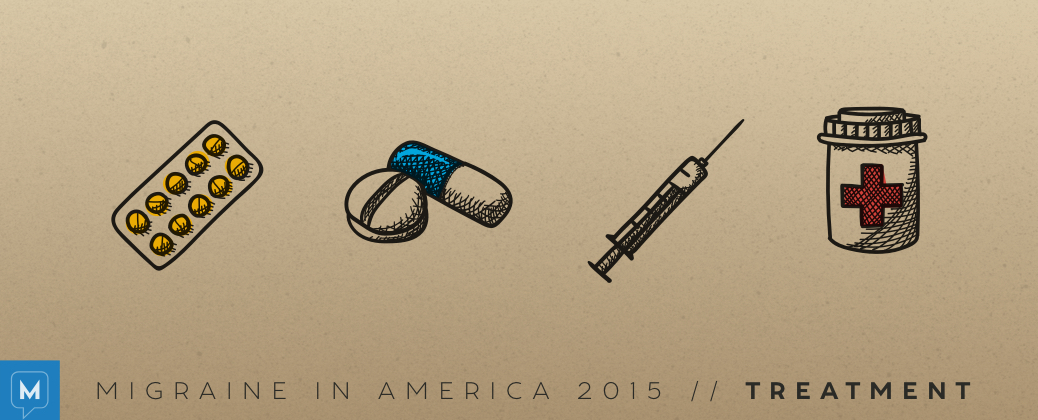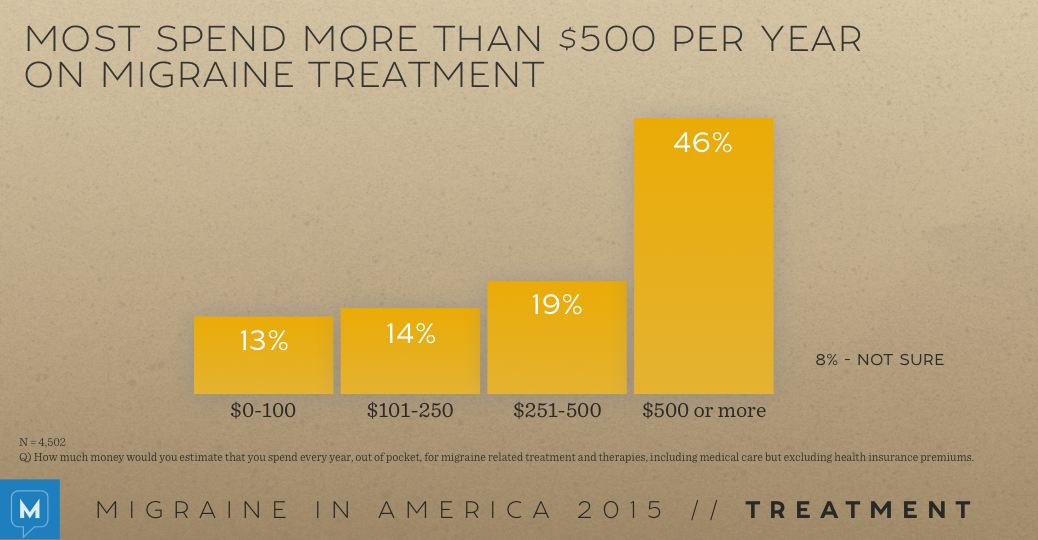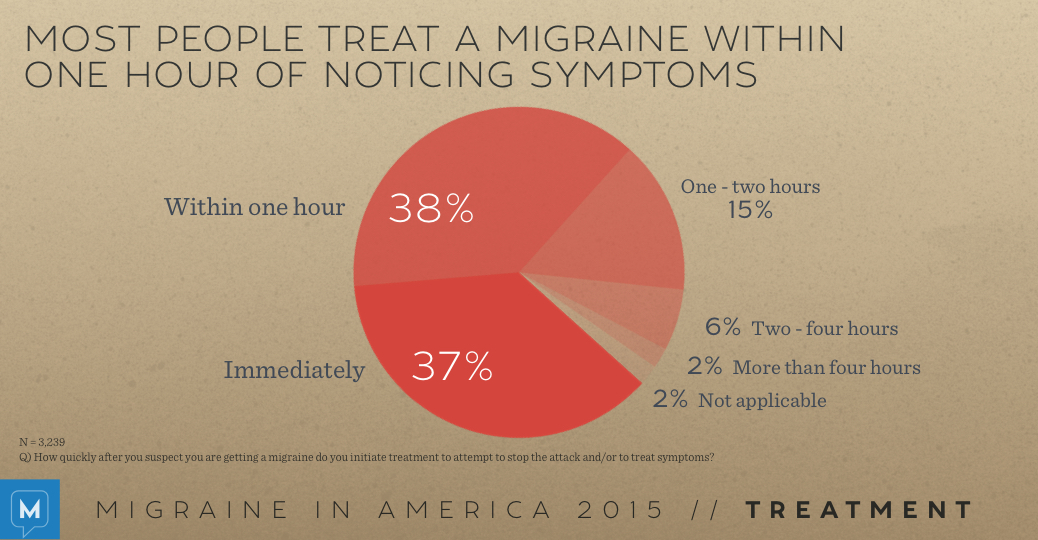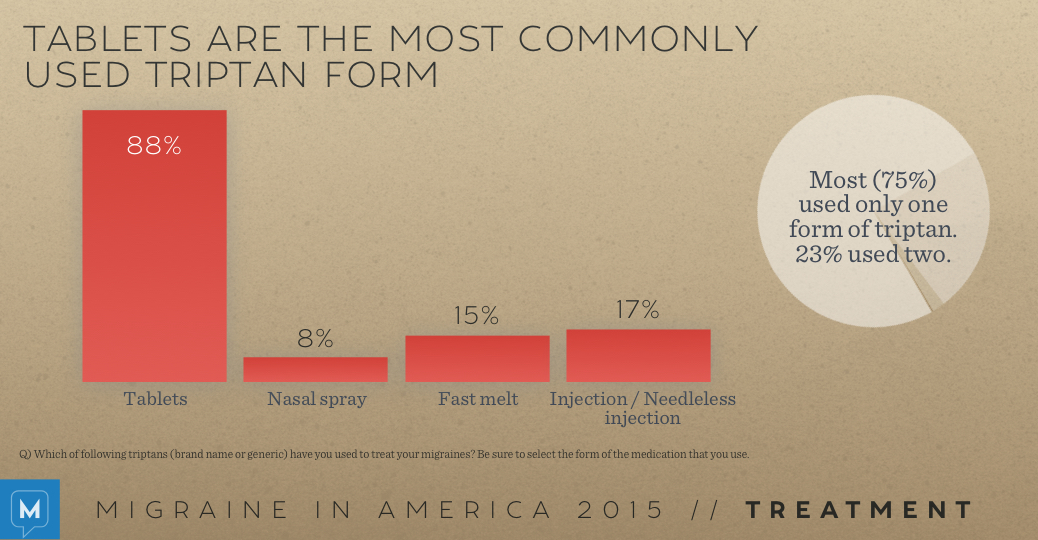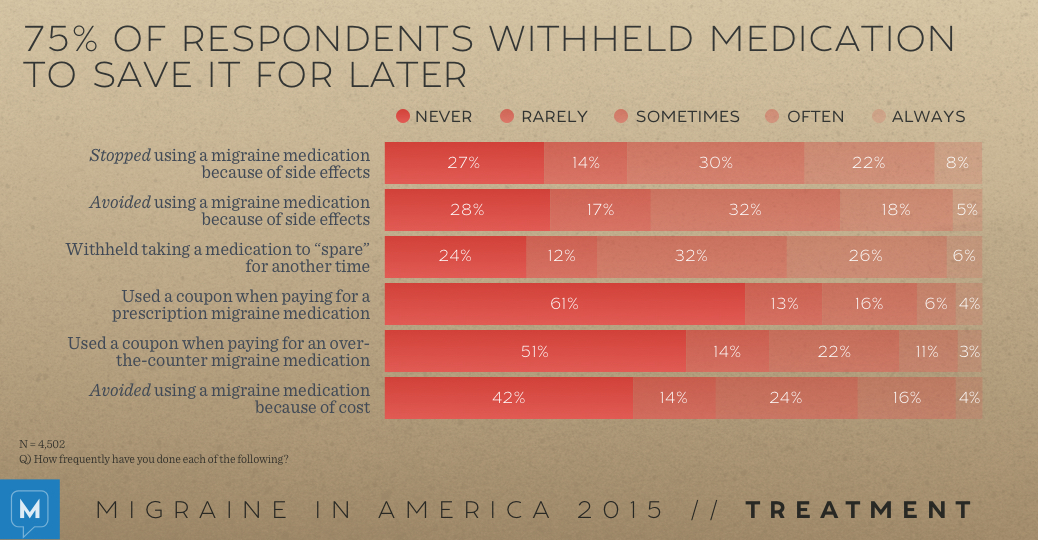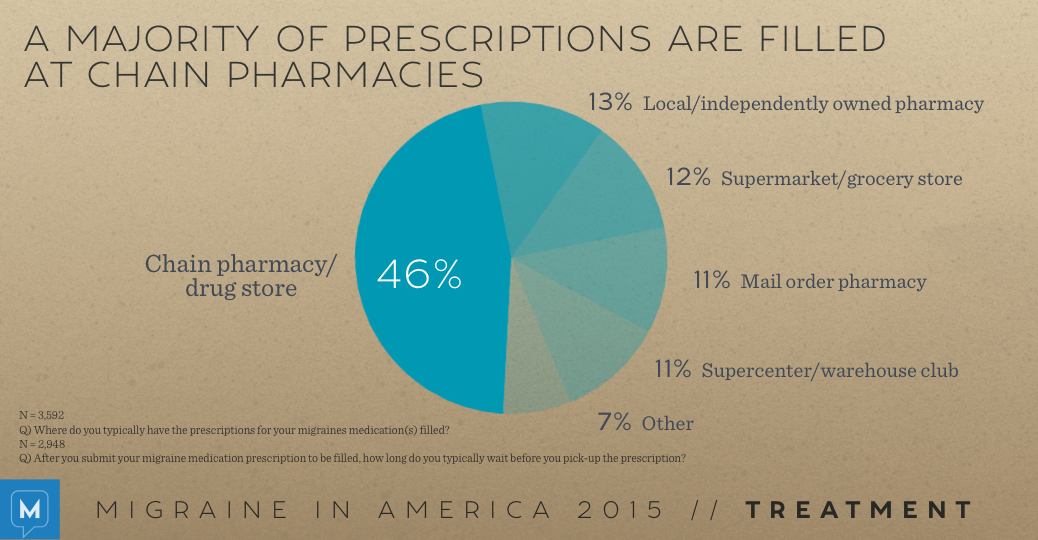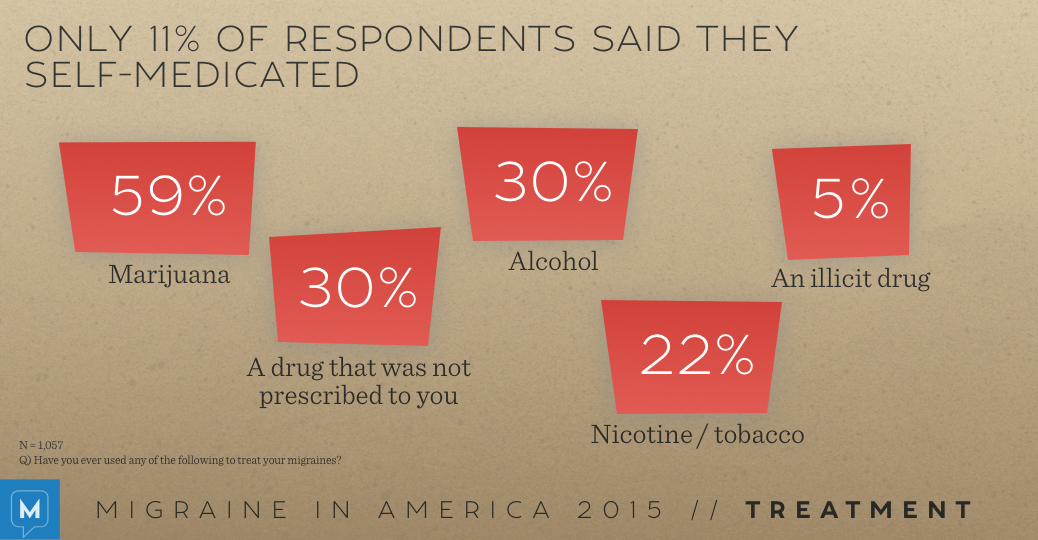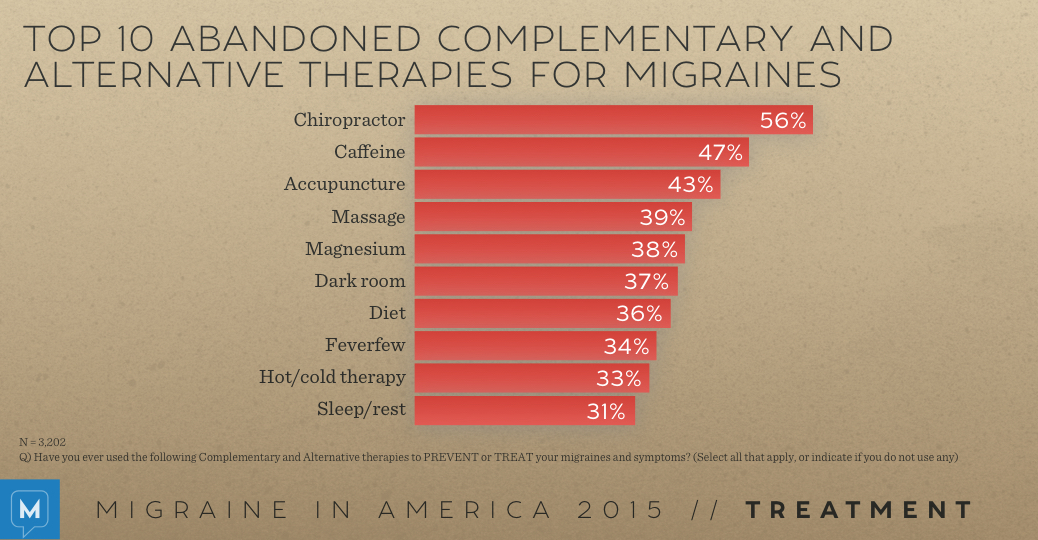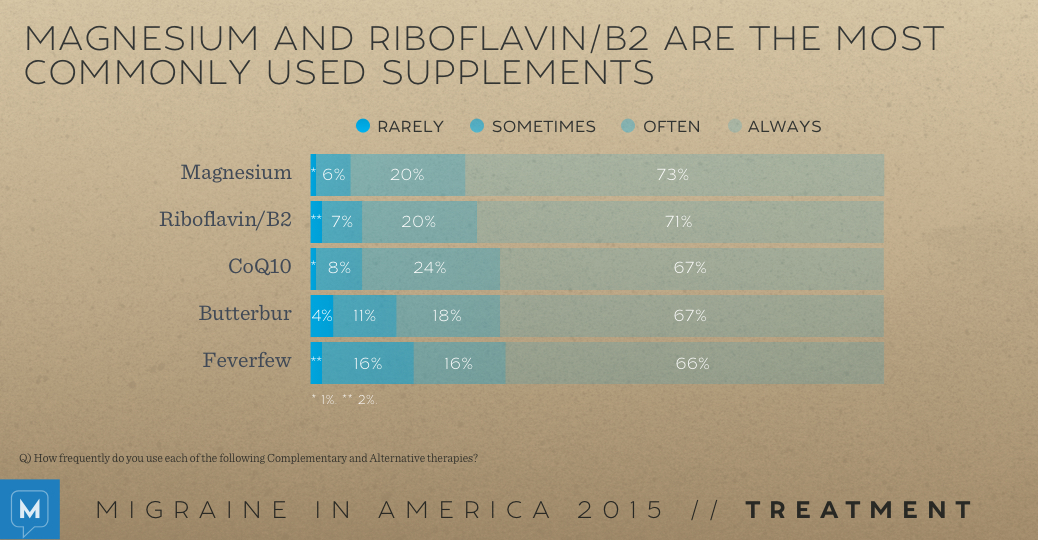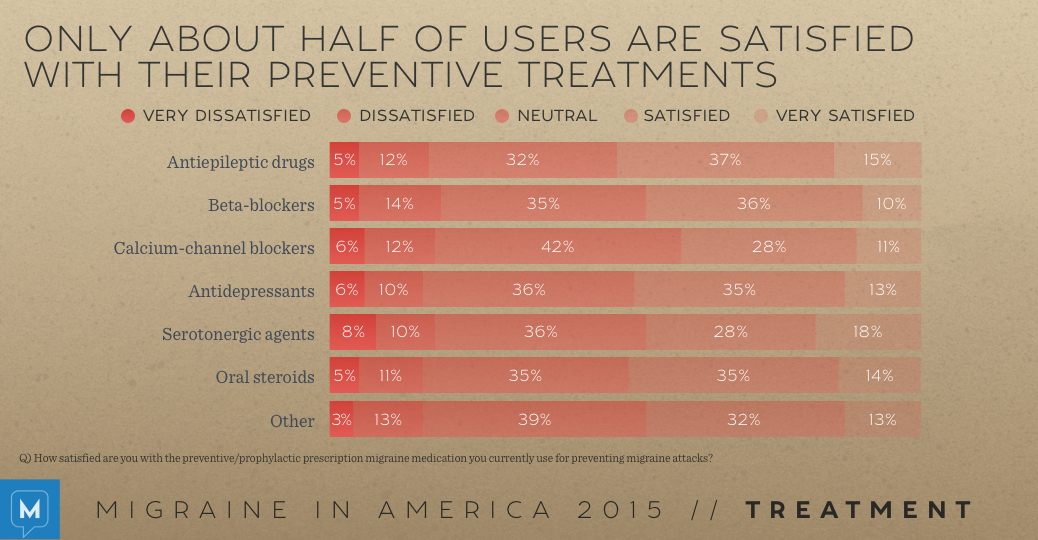Migraine in America: Treatment
The Migraine In America 2015 online survey was conducted to gather insights from over 4,500 individuals currently diagnosed with migraines in hopes of better understanding their symptoms, life impact and treatment experience. Respondents were primarily female and over the age of 40, as well as being married with children and located across the U.S. Over half of respondents experienced 8 or more migraine attacks each month, and almost half experienced migraine symptoms on 15 or more days a month.
The 2015 survey continued to illustrate the challenges and impact of migraine, building upon findings from previous surveys:
- Migraine has been a long-standing challenge, with most having experienced migraine symptoms for at
least half of their lives - Migraine is more than headache pain, it is a myriad of migraine symptoms that vary from one attack to
another - Migraine was most often described as “debilitating” and impacted all areas of patients’ lives
- Many reported feeling as if they had tried everything to manage their migraines – with prescription
medications, OTC drugs, complementary and alternative therapies – they continue to seek out new approaches to treat and prevent migraines, and are willing to keep trying new options
Abortive / acute prescription migraine medications were the most commonly used (66%), followed by OTC pain medications (57%), preventive prescription migraine medications (47%) and rescue prescription migraine medications (39%).

Although a majority of respondents had insurance, nearly half of respondents spent more than $500 last year on migraine related treatment and therapies. Another 19% spent between $251-$500 to cover migraine related care.
Among preventive migraine medications, antiepileptic drugs were currently used by almost a third of users and antidepressants by over 1⁄4. However over half of current antidepressant users suffered from depression and/or anxiety, so usage may also be to treat these conditions and not migraine exclusively. Despite having the highest abandonment rate, Antiepileptic drugs had the highest level of satisfaction among current preventive users (51%).

Among abortive / rescue medication users, triptans were currently used by over half of users and anti- nausea medications by almost 40%.
Not surprising that 35% of abortive or rescue medication users indicated they would consider switching medications if their current stopped working for them.
75% of abortive or rescue medication users cited they would initiate treatment within an hour of suspecting they are getting a migraine, only 8% waited over 2 hours.
Of those who usually waited more than 2 hours, they typically didn’t want to overuse medication or waste it, as well as ensure that they really were getting a migraine.
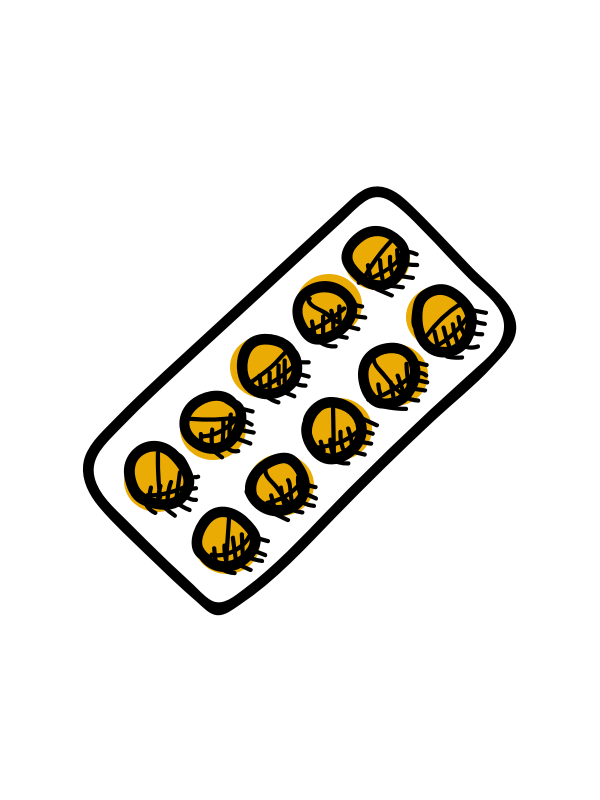
Imitrex had the highest usage rate among the triptan tablet medications surveyed, as well as among the nasal sprays surveyed. For the triptans used within the previous 3 months, at least half of respondents reported satisfaction with the medication’s efficacy and also with its tolerability.
Over 2.5K respondents had used a triptan within the past 3 months - primarily tablets. About 1 in 4 had used 2 or more forms of triptans.
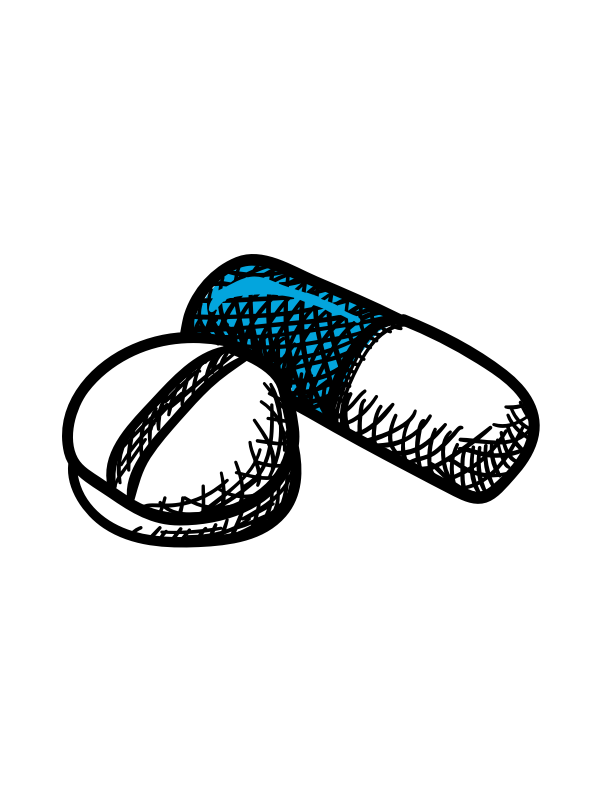
Among current triptan users, most had been using their current medication for over a year – with Imitrex having the highest proportion of long term users.
3 out of 4 respondents at some point in their treatment journey had withheld taking a medication to spare it for another time. Side effects also played a role in medication avoidance for over half of respondents.

Respondents typically filled their migraine medication prescriptions at a chain pharmacy. Over a third of respondents (35%) reported typically waiting at the pharmacy for their migraine medication fill, and half usually drop-off and return within 24 hours.
Self-medication was currently being used by a small proportion of respondents (11%). Marijuana was by far the most commonly used among current self- medicators (59%).
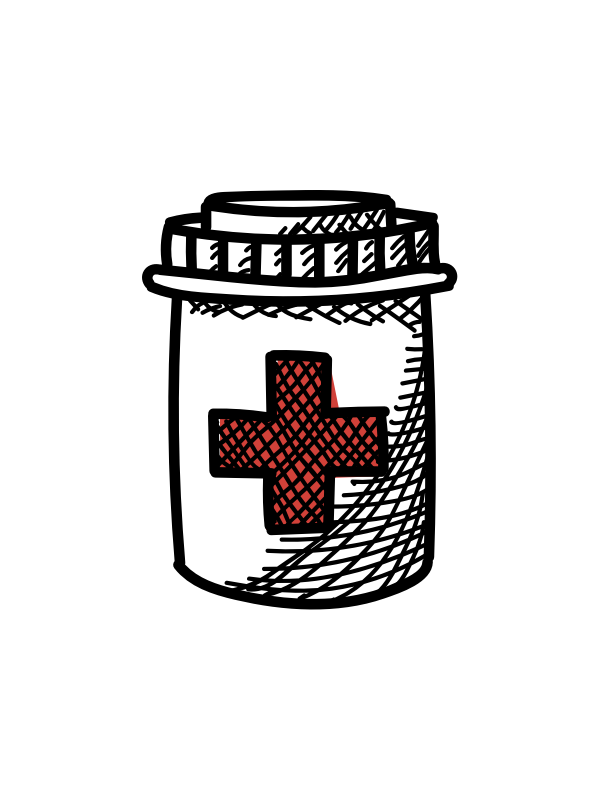
71% of respondents had tried or were currently using complementary and alternative therapies for their migraines. Sleep / rest and dark rooms were the most prevalent, consistently utilized by at least half of current users.
A variety of therapies have been used in attempt to reduce or stop migraine symptoms, however, many have not persisted with those they have tried. Chiropractic, caffeine use and acupuncture were most discontinued therapies, having been tried in the past but no longer used.

Dietary supplements, such as magnesium, riboflavin, butterbur, CoQ10, and feverfew, were the alternative therapies used most frequently.
Despite all the available options, it’s important to
remember that few of these options were developed
specifically for the treatment of migraine. Therefore it’s not
surprising that the overall satisfaction level, with even the
most commonly used migraine treatments, remains at only
about half of users.

